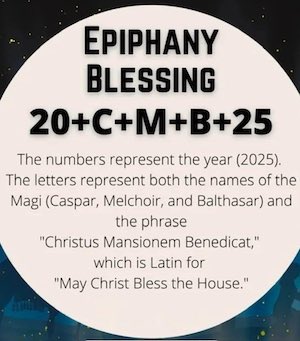Epiphany, derived from the Greek word “epiphaneia” meaning “appearance” or “manifestation,” is a Christian feast day that commemorates the visit of the Magi, or Wise Men, to the infant Jesus. Celebrated on January 6th, it marks the end of the Christmas season for many, although in the United States, it is often observed on the Sunday closest to this date. Epiphany not only recounts the biblical story of the Magi but also celebrates Jesus’s baptism and his first miracle at the wedding in Cana, symbolizing his revelation to the world.
Historical and Religious Significance
Originally, Epiphany was one of the earliest Christian feasts, with celebrations dating back to the 2nd century. It was particularly significant in the Eastern Churches where it’s known as Theophany, emphasizing Christ’s baptism. Over centuries, the feast has evolved to incorporate various cultural customs across different countries, highlighting its universal appeal while maintaining its core Christian message of light overcoming darkness and divine revelation.
Customs and Traditions in the US

- Chalking the Door: A popular tradition involves blessing homes by writing the initials of the three Magi (Caspar, Melchior, and Balthazar) over the door with chalk. The inscription usually looks like “20 + C + M + B + 25”, where “C,” “M,” and “B” also stand for “Christus mansionem benedicat” (May Christ bless the house). This practice symbolizes protection and blessings for the coming year.
- Epiphany Singing or Star Singers: In some communities, groups of children dressed as the Three Kings go from house to house singing carols, asking for donations for charity, which mirrors the journey of the Magi to find Jesus guided by a star. This tradition, while more common in Europe, has found its way into certain U.S. parishes, especially those with strong German or Austrian roots.
- King Cake: In the U.S., particularly in areas with strong Catholic and Hispanic influences like New Orleans and parts of Texas, Epiphany coincides with the start of the Carnival season. Here, “King Cake” is a central tradition. This round, sweet bread often has a small figurine hidden inside, symbolizing the baby Jesus. Whoever finds the figurine in their slice is traditionally responsible for hosting the next gathering or providing the next cake.
- Removing Christmas Decorations: While not strictly an Epiphany custom, many in the U.S. follow the tradition of taking down Christmas decorations on Twelfth Night (the evening before Epiphany), considering it inauspicious to leave them up beyond this point. This marks the transition out of the holiday season into the new year.
- Parades and Services: Special church services are held to commemorate the feast, often including processions or reenactments of the Magi’s journey. These can range from simple to elaborate, with some communities staging entire live nativity scenes or parades where participants dress as the Wise Men.
Epiphany serves as a reminder of the inclusivity of Christ’s message, reaching beyond Jewish tradition to all nations, symbolized by the diverse backgrounds of the Magi. This feast invites reflection on the concept of divine revelation and the journey of faith, making it a profound celebration within the Christian calendar, even as it adapts to the cultural tapestry of the United States.